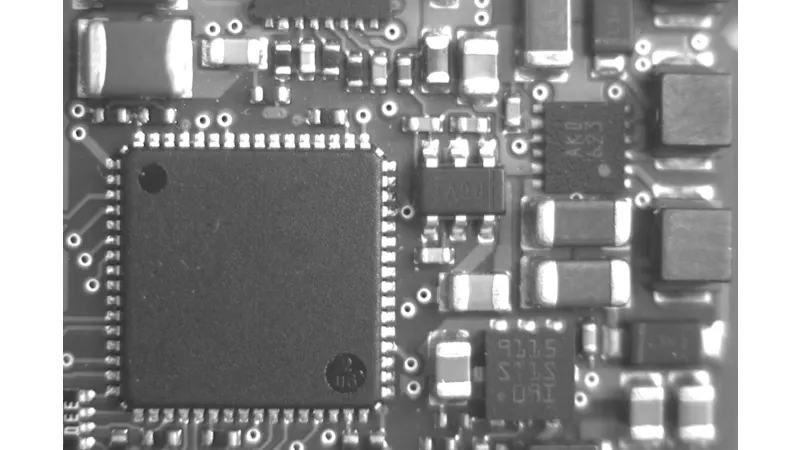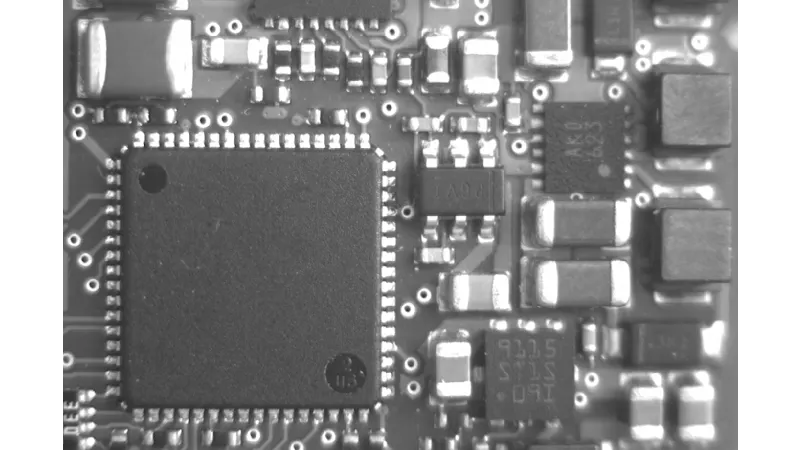The Unique Beyond Features from Basler
Our ace 2 Pro and ace 2 X UV cameras offer unique features that provide you with immediate added value in terms of performance enhancement and cost savings in operating your vision system. The Beyond features are often patented or patent pending and are particularly characterized by functionality that is unique in the market.

Faster frame rates on GigE with Compression Beyond
Is the bandwidth of Gigabit Ethernet limiting the performance of your system?
Benefit from more efficient use of bandwidth with Basler's new in-camera feature Compression Beyond.
Maximum GigE with minimum effort: Compression Beyond
Gigabit Ethernet for Machine Vision (GigE Vision) offers many advantages in the field of professional image processing. For example, multi-camera systems can be optimally implemented and distances of up to 100 meters can be bridged with cost-effective network cables. At the same time, the data rate of up to 120 MB/s is perfectly adequate for many image processing applications.
However, the current trend towards higher resolutions and faster frame rates is increasingly driving the desire for higher data rates. The leap to ten times the data rate made possible by new interface technologies such as CoaXPress 2.0 and 10GigE, however, is often not necessary for these applications and would involve significantly higher costs.
The solution: more efficient use of bandwidth. Compressing data directly in the camera makes frame rates in the two- to threefold range a reality - depending on the image content in question.
How does Compression Beyond work?
The image data is compressed directly in the camera using a powerful FPGA.
The basic principle of lossless compression of image data is based on the use of redundancies. Similar to the previously widely used Morse code, the compression of image data is also based on so-called coding. This means that codes are assigned to individual messages or data blocks. More frequently occurring bit patterns are assigned shorter codes, while less frequently occurring bit patterns are assigned longer codes. On average, the amount of data can be optimized by this redundancy reduction.
It follows that images that contain a lot of redundancy are more compressible, and how powerful the compression is in concrete terms always depends on the image content in question.
Image comparison


Coding per Basler Codebook
The Compression Beyond feature is based on a codebook developed by Basler and optimized for machine vision applications, making it unique in the market. The principle of entropy coding enables lossless compression of image data, which means that the image quality is fully preserved while the amount of data is significantly reduced.
In addition, the image data can also be saved in compressed format, which saves storage capacity and consequently costs.
Not every application requires the same level of compression. To give our customers as much leeway as possible here, we go one step further: To help you find the optimal balance between image size and image quality for your application, you can individually adjust the compression factor and also select even stronger, but then lossy compression to achieve the best result for your requirements. Explore the FAQ about the feature.
Pixel Beyond - pixel size as needed
Do you want to reduce the resolution but maintain the field of view? Are you limited by common binning factors? Do you want a higher frame rate or to replace a discontinued sensor as easily as possible?
Customize your sensor to your needs - with Pixel Beyond.
Pixel sizes as desired – Pixel Beyond makes it possible
If you combine the values of neighboring pixels of a sensor, this is called binning. There can be different reasons for binning: some users want to increase the brightness in their images, others want to reduce the amount of data. Some need higher frame rates, others are looking for a straightforward replacement for their discontinued sensor.
Binning can help with all of these objectives. Binning can be used to reduce the resolution while maintaining the field of view, and to improve certain sensor values such as the signal-to-noise ratio (SNR) and dynamic range. In theory, this reduces the amount of data to be processed, often increases the frame rate, and shortens the exposure time or makes the images brighter. In practice, however, the decisive disadvantage is that conventional binning is based exclusively on integer factors.
What are the benefits of Pixel Beyond?
Conventional binning takes place at the sensor level. Since this binning method only allows integer multiples such as 2x2 or 3x3, the resolution can thus only be reduced in large jumps - for example to ¼ or 1/9. However, this jumping reduction of the resolution is often not useful or even a hindrance. The optimal target often lies in between, but cannot be realized with integer binning.
Pixel Beyond and the More Flexible Scalability of Pixel SizesPixel Beyond from Basler offers a decisive advantage: in addition to integer factors, it also allows the use of decimal numbers. The result: significantly more flexibility! Thanks to Pixel Beyond, all conceivable resolutions between ¼ and the respective maximum sensor resolution can be realized as desired. With the help of a powerful FPGA, this preprocessing of the pixels takes place directly in the camera. A novel interpolation method developed by Basler serves as the basis for this.
The benefit for you as a customer: By customizing the resolution, you can use the available bandwidth more efficiently and significantly reduce the amount of data that has to be processed on the host side.
Pixel Beyond allows you to realistically simulate different sensors, which makes it easy to replace a discontinued sensor without having to redesign your vision system. On the other hand, approaches that try to reproduce sensor properties using conventional interpolation methods such as nearest-neighbor or (bi-)linear often lead to incorrect EMVA data.